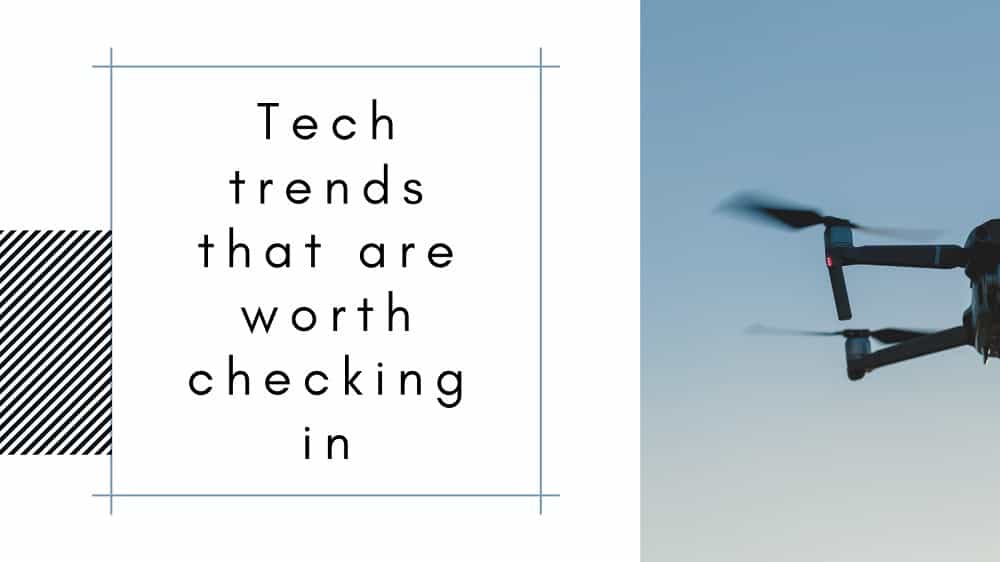New technologies have always been a mystery for most users. Now, though, everything has changed. The new tech achievements are becoming more accessible and easier to manage. By the way, technology democratization is one of the newer tech trends.
It can be observed in many examples, starting from easy-to-install lifting parts for your new DIY project and completing complex industrial solutions. Technology is becoming accessible even to those who do not have any specific tech knowledge. And now, let us check some technologies that have changed or are going to change the industry completely.
Virtual Reality and Augmented Reality
These technologies are not applied in full yet. However, in the nearest future, these technologies might bring many unexpected surprises.
We deal with AR when a digital layer is pulled to what we really see. Some details might be enhanced to draw attention to them.
In the case of VR, we deal with a completely virtual stratum.
Both technologies can be widely applied in the industry. For example, AR can be used to boost the safety level in hazardous zones. The dangers might be augmented to draw workers` attention to them.
While VR can improve the practice of training organization and maintenance works. With this technology, workers can participate in all the events virtually, however, the experience will be maximally close to real.
Artificial Intelligence
AI is already applied widely, moreover, the technology is developing fast and continuously. Such companies as Microsoft, Amazon, Google have already proven the efficiency of AI.
Perspectives of AI in tech are very promising. AI can contribute greatly to automation at all production levels. It can serve for QA tasks, planning, scheduling, etc. While now, it is still too early to speak about the independence of machines, but there is no doubt that with time, AI might change the entire way we work.
AI and machine learning will allow robots to work along with people. Now, they work either in separate environments or consecutively. To work together, to collaborate, machines shall be able to recognize the intent, actions of humans. Now, R&D teams are working on achieving such results.
Other than that, robots now can perform a lot of tasks. They are irreplaceable in locations and environments where human life or health is endangered. Also, robots are good at exploring remote or isolated locations to access the possibility to use them for industrial purposes.
Application of Wearable Devices
Wearable devices are not only smart watches or smart glasses. In different industries, those are:
- Special costumes with sensors that can check vital signs of a worker, monitor whether the worker isn’t too tired, under drugs, etc.;
- Sensors on boots to warn about entering into a restricted area;
- Personal protective equipment with sensors, etc.
In most cases, such wearable enable better control over the workers and prevent accidents. Also, sensors are sometimes installed in tools to prevent their loss.
For now, wearable devices of all kinds are mostly used in the construction industry. However, they are so efficient that there is no doubt that they will find a wider application.
Mobile Applications and Software
We use already different types of software and various mobile apps for different purposes. In the tech industry, they can be (and are) successfully applied to communicate with colleagues to solve things remotely, to discuss ideas, to get access to automation processes, etc.
It boosts the flexibility of workers and enables the facilities to work even when human workers are available minimally.
Conclusion
Nowadays, there are many tech achievements that can change completely the way people work. The main trends relate to automation and AI, machine learning.
Now, machines replace people only in the cases when repetitive operations are needed, or decisions are made based on a specific pattern. In this regard, machines can be even more efficient and cheaper than human workers. In the case of automated operations, we can note such benefits as:
- Risk reduction since robots do not feel fatigued or bored. They are not experiencing concentration loss. And thus, they don’t make errors;
- Robots operate based on exact algorithms. If you want to make changes in operation, you change the algorithm;
- Machines work whenever it is needed, without days off, holidays, vacations, sick leaves. It comes with immense savings;
- Finally, machines allow for plenty of opportunities to boost work efficiency. And with it, businesses have just to invest in a specific machine and its maintenance. No additional costs are involved.
The only drawback that stops enterprises to replace human workers with automatic ones is the fact that machines cannot do everything.
With time though, they will learn to make decisions independently within a particular field. Then, all the manufacturing operations will be passed to robots while people will be able to concentrate on managerial and administrative functions.
Author Bio:
Hayley Mann is a technology enthusiast specializing in automation methods of ergonomics devices. Her engineering background helps her to create interesting articles on technical topics, making them understandable for all readers.
